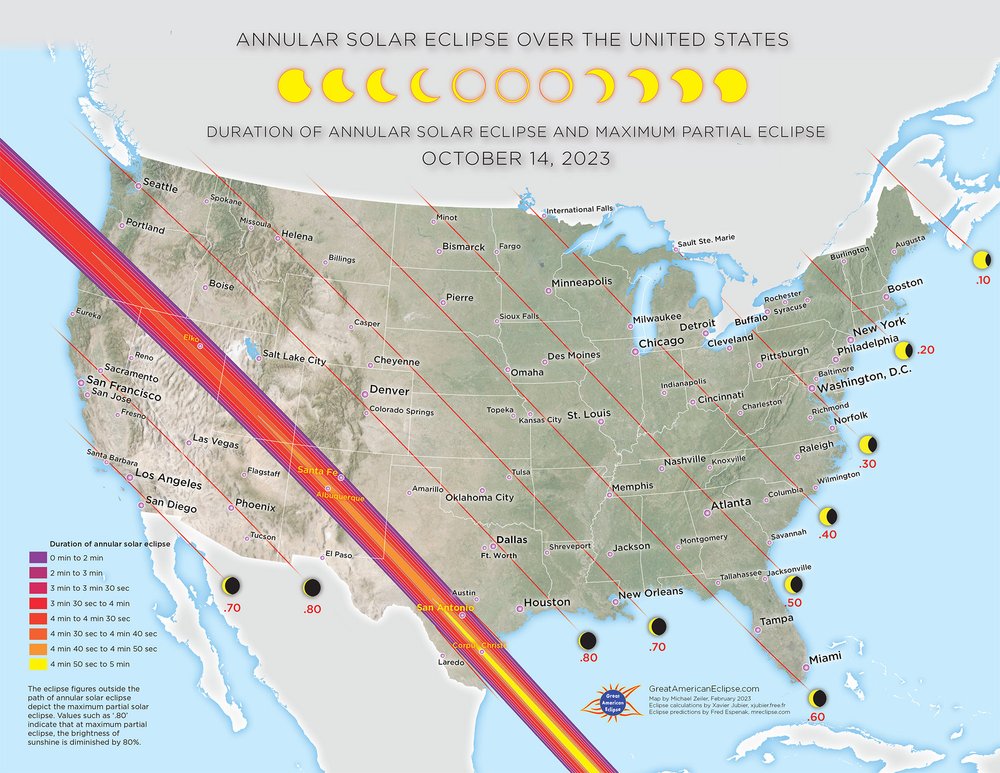It is almost time to get some eclipse glasses and look to the sky. On October 14, millions of people across the Americas will get the chance to see an annular eclipse of the Sun. This happens when, during a total solar eclipse, the Moon is near its apogee, the furthest point from Earth. The moon’s apparent size is smaller than usual and it is unable to cover the whole solar disk, creating the iconic “ring of fire” effect.
The ring of fire will be visible in a narrow path that goes from Oregon to Texas, crossing Yucatán, the southern portion of Central America, and then extending south to Brazil. But even if you are not on the path of annularity, you will be able to see a partial solar eclipse. From the western United States all the way south, plenty of people will have the right conditions to catch the Moon covering part of the Sun. More details can be found on GreatAmericanEclipse.com.
The path of annularity and the regions of partial eclipse across the US.
Image credit: Michael Zeiler, GreatAmericanEclipse.com
The Moon’s orbit around the Earth is slightly tilted with respect to the Earth’s orbit around the Sun. Eclipses happen when the three bodies lie on the same line, a phenomenon called syzygy. This happens a few times a year, but it goes in cycles.
In total solar eclipses, when the Sun is completely covered, you can look at the spectacle safely with your eyes. But do not attempt that during an annular eclipse or partial eclipse. Looking directly at the Sun, even when it is partially covered by the Moon, can make your eyes extremely sore and even burn your retina. Some of these visual impairments might be temporary, but it is possible for them to become permanent.
So, please be safe and use good solar glasses (they can filter something like 99.7 percent of the visible light of the Sun as well as other wavelengths). Or, use indirect approaches to seeing the eclipse, such as the pinhole method. If you are using a telescope, binoculars, or camera to see the eclipse, make sure to use filters, especially with lenses that might send light directly to your eyes. Be sensible when it comes to observing this spectacular event.
If you are not near the path of annularity or even where the partial eclipse will be visible, NASA has got you covered. There will be live coverage of the celestial alignment, which will air on NASA TV and the agency’s website and social media from 11:30 am to 1:15 pm EDT.
And if you miss this one, the US is lucky enough to have another solar eclipse coming in just six months’ time. On April 8, 2024, a total solar eclipse will be visible from Mexico to Canada, crossing the US from Texas to Maine.
Source Link: How To Watch The "Ring Of Fire" Eclipse Across The United States This Month
